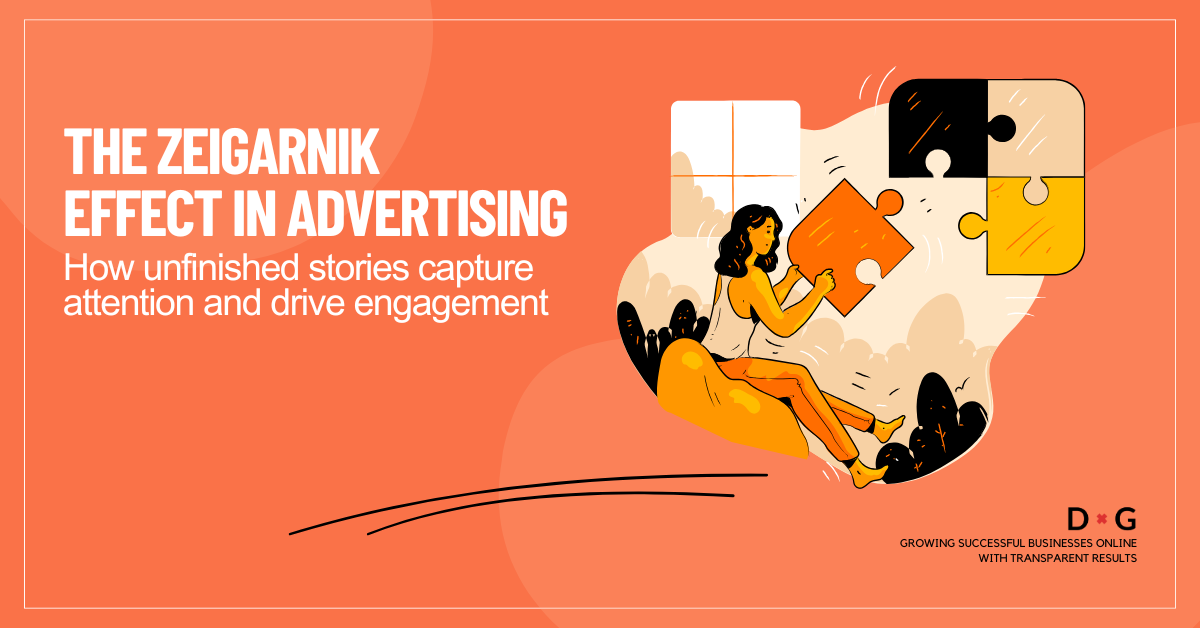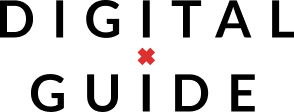
In marketing, grabbing and holding attention is one of the biggest challenges. The Zeigarnik Effect is a psychological principle that helps advertisers capture and maintain audience attention effectively. This effect can boost paid advertising. It helps increase engagement, drive clicks, and keep audiences interested in your brand.
Advertisers can shape how people engage with their content. But how exactly does the Zeigarnik Effect work, and how can it be applied effectively in ad campaigns?
Let’s explore.
Understanding the Zeigarnik Effect
The Zeigarnik Effect comes from the work of Bluma Zeigarnik, a psychologist. She found that people remember unfinished or interrupted tasks better than completed ones.
This happens because the brain seeks closure. When a task or story remains unresolved, the mind keeps it active, searching for a way to complete it. We often remember suspenseful movies, cliffhangers, or unfinished projects better than completed ones.
In advertising, this principle sparks curiosity and builds anticipation. It keeps potential customers engaged and wanting to learn more.
How the Zeigarnik Effect Works in Paid Advertising
The Zeigarnik Effect is a powerful tool in advertising, helping brands capture attention and keep audiences engaged. By strategically using curiosity and incomplete information, advertisers can drive higher interactions and compel users to take action.
Here’s how this psychological principle works in paid advertising.
Using Curiosity to Capture Attention
Curiosity is a powerful driver of human behaviour. When something is left incomplete or unanswered, the brain naturally wants to fill in the gaps.
In paid advertising, this means structuring ad content in a way that sparks curiosity without giving away the full message immediately. This compels users to click, watch, or engage further with the ad to satisfy their curiosity.
Creating Open Loops in Storytelling
An open loop is an incomplete story or idea that naturally encourages the brain to seek resolution. When a narrative or message is left unfinished, it creates a tension that people want to resolve.
In advertising, this can be applied through:
- Structuring video ads so that the most intriguing part is revealed only after a certain action is taken.
- Designing display ads that hint at something compelling without revealing all the details.
- Writing headlines that create suspense, encouraging users to read more.
By keeping the audience engaged with an unresolved question or situation, advertisers can drive higher interactions and conversions.
Strategies to Apply the Zeigarnik Effect in Paid Ads
To effectively use the Zeigarnik Effect in paid advertising, marketers need to apply strategic techniques that spark curiosity and keep audiences engaged. By crafting compelling headlines, using intriguing visuals, structuring video ads for suspense, and designing CTAs that encourage further action, advertisers can create high-performing campaigns.
Here are key strategies to make the most of this psychological principle.
Crafting Engaging Headlines and Descriptions
To make the most of the Zeigarnik Effect, headlines and descriptions should be structured to spark curiosity and encourage users to engage further. Instead of giving away the main message immediately, ads should leave room for interpretation, questions, or intrigue.
This approach works well across search ads, social media promotions, and email marketing campaigns, where attention spans are short, and advertisers need to quickly grab interest.
Designing Visuals That Spark Curiosity
Images and videos can be just as effective as text in creating curiosity. By showing only part of the picture or presenting an intriguing scene without full context, brands can entice audiences to take the next step to uncover the full story.
For example, an ad could use a mysterious or partially revealed product image to encourage viewers to click and learn more. Similarly, short teaser videos can hold back key details, compelling users to watch the full version.
Structuring Video Ads to Keep Viewers Hooked
Video ads offer a unique opportunity to create suspense and anticipation. By revealing information in stages rather than all at once, advertisers can hold attention longer and encourage viewers to stay engaged until the very end.
To apply this:
- Start with a compelling hook that introduces a mystery or an unresolved question.
- Gradually reveal details, but keep the most important part for later.
- End with a call-to-action (CTA) that encourages further engagement, such as clicking a link, signing up, or watching another video.
Using CTAs That Encourage Further Action
The final step in leveraging the Zeigarnik Effect is ensuring the CTA reinforces the desire for closure. Instead of using generic phrases like “Learn More,” CTAs should align with the curiosity-driven messaging by encouraging users to take the next step.
For instance, CTAs can:
- Invite users to uncover the “missing piece” of a story.
- Encourage further exploration with phrases that suggest exclusivity or a hidden benefit.
- Provide a clear but intriguing next step that aligns with the ad’s open loop.
Conclusion
The Zeigarnik Effect is a powerful psychological tool that can significantly enhance paid advertising strategies. By using curiosity, open loops, and incomplete information, advertisers can create ads that hold attention, drive engagement, and increase conversions.
For brands looking to improve their advertising performance, incorporating this technique into ad copy, visuals, and CTAs can lead to higher click-through rates and stronger audience interactions.
Want to discover more ways to optimise your digital marketing strategy? Visit Digital Guide for expert insights into advertising techniques that drive real results.
